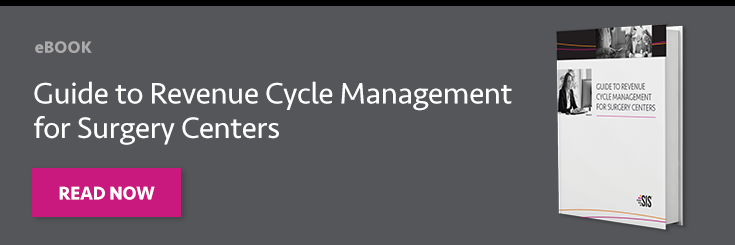 Even small improvements to your hospital's revenue cycle management (RCM) can deliver significant boosts to your bottom line. After all, once you make a positive change, and assuming it's sustained, you will reap the benefits indefinitely.
Even small improvements to your hospital's revenue cycle management (RCM) can deliver significant boosts to your bottom line. After all, once you make a positive change, and assuming it's sustained, you will reap the benefits indefinitely.
Here are five tips to follow to improve your hospital's RCM performance.
1. Act on your data.
It's not enough to just measure and benchmark your hospital's revenue cycle data. If you don't do anything with the information, then all you are doing is performing an exercise. That's why it is imperative to analyze the results of your benchmarking, identify prime areas for improvement, and then implement measures to achieve improvements. Then you will want to repeat the process until you feel that the area you targeted for improvement has been optimized.
2. Audit your denials.
If claims denials are common in your hospital, this may point to problems in one or more of your revenue cycle processes rather than just the occasional human error. Access all the denials that come in over a few weeks or a month, noting the reasons for each denial. Then look for any patterns. Are there common coding errors? Is your documentation incomplete? Are you lacking preauthorization?
When you identify a trend, work to implement a fix that addresses the root of the problem within your revenue cycle process. This may require some staff education and training.
3. Focus more on patient collections.
As patient financial responsibility has grown due to high-deductible plans and increased co-pays, so has the need for hospitals to ensure they are collecting all that patients owe for their care, preferably before the patient receives treatment. Once patients receive care and leave your hospital, the likelihood of collecting all that they owe declines.
Make sure your team members know how to effectively communicate with patients about their financial responsibility and request payment. The use of scripts and scenario-based training can help boost staff comfort when discussing financial issues and performance in collecting money owed.
4. Review your write-offs.
It's not uncommon for large discrepancies in payments to receive immediate attention. If you submitted a claim expecting $25,000 in reimbursement and were only reimbursed $5,000, that should raise a red flag. Staff should immediately work to identify possible reasons for the discrepancy and, if it's determined that the $25,000 expected is correct, take the necessary steps to capture the remaining $20,000.
Oftentimes, attention is only paid to discrepancies of significant dollars, with smaller amounts written off. The problem here is when those small underpayments are not isolated issues but rather trends. Over time, recurring, small underpayments can add up to a large underpayment. As part of your routine examination of payor contracts, assess your write-offs to see if there is a recurring discrepancy. If you find one, bring this to the attention of the payor and then monitor whether the discrepancy continues. If it does, follow up with the payor, referencing your previous discussion about the matter.
5. Tap into staff insight.
Looking for another way to identify revenue cycle areas for possible improvement or ideas for how to address a problem? Speak with staff who perform the daily tasks that drive your hospital's revenue cycle, asking for their observations and recommendations. Their work "in the weeds" may provide them with a unique perspective on operations. And by involving them in the RCM improvement process, you are more likely to earn their buy-in for changes and achieve sustainable improvements.
Prolonged Growth Through Process Development
The tips described in this piece can help you improve your RCM and grow your bottom line. To maximize their benefits, they cannot be viewed as "one-and-done" opportunities. Rather, you should work to develop processes through which each of these improvement efforts — and any others that you find are successful — are revisited on a regular basis. This will help you find new opportunities for improvements and prevent problems from returning.

















